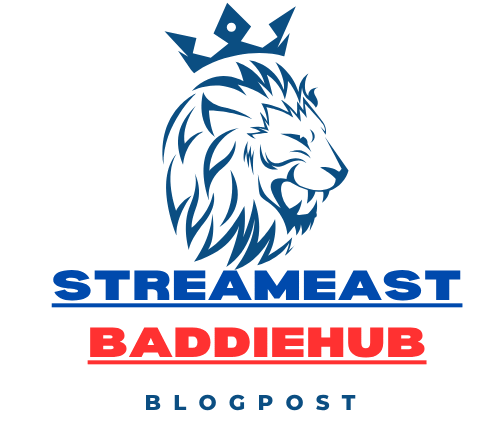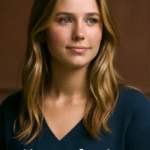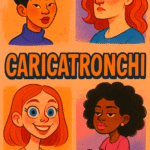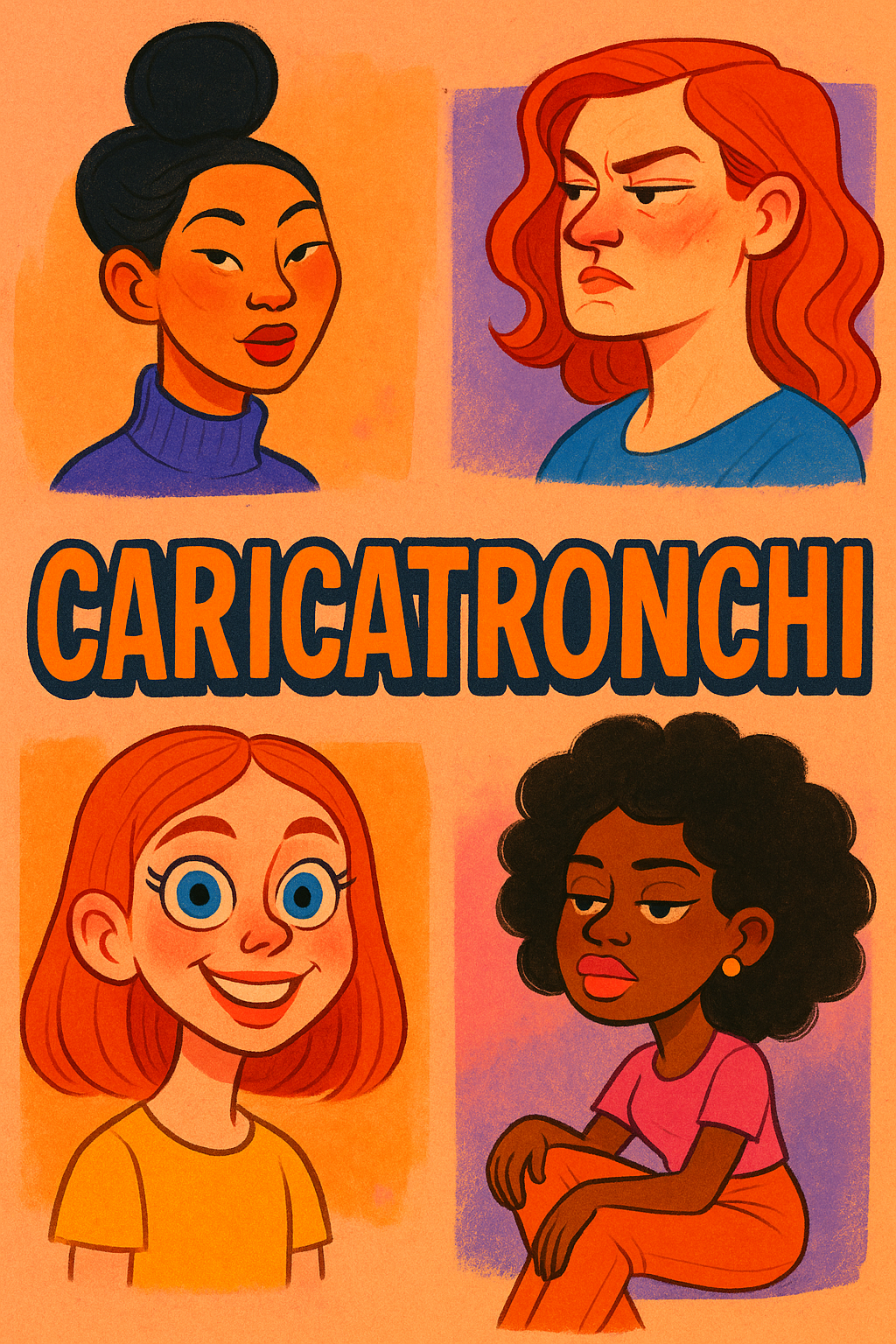Ever encountered a portrait so wildly exaggerated that it danced between caricature and cartoon—and thought, “What is this?” That’s the realm of caricatronchi. It’s a bold, playful, and emotionally charged visual style that fuses the humor of caricature with the stylized flair of modern illustration. In this article we’ll dive deep into what “caricatronchi” means, how it emerged, why it’s gaining traction, how you can create it (or commission it), and where it’s headed. We’ll use the keyword caricatronchi throughout (while keeping density below ~1.7%) and cover related keywords like digital caricature, stylised portrait art, visual identity, and exaggerated illustration.
Let’s uncover the world of caricatronchi together.
What is Caricatronchi?
The term caricatronchi is a fusion of “caricature” (an art form that exaggerates features for comic or expressive effect) and the Italian word “tronchi,” meaning trunks or fragments. At its core, caricatronchi describes portrait-style art that exaggerates human features and sometimes fragments or distorts body parts in a stylised way.
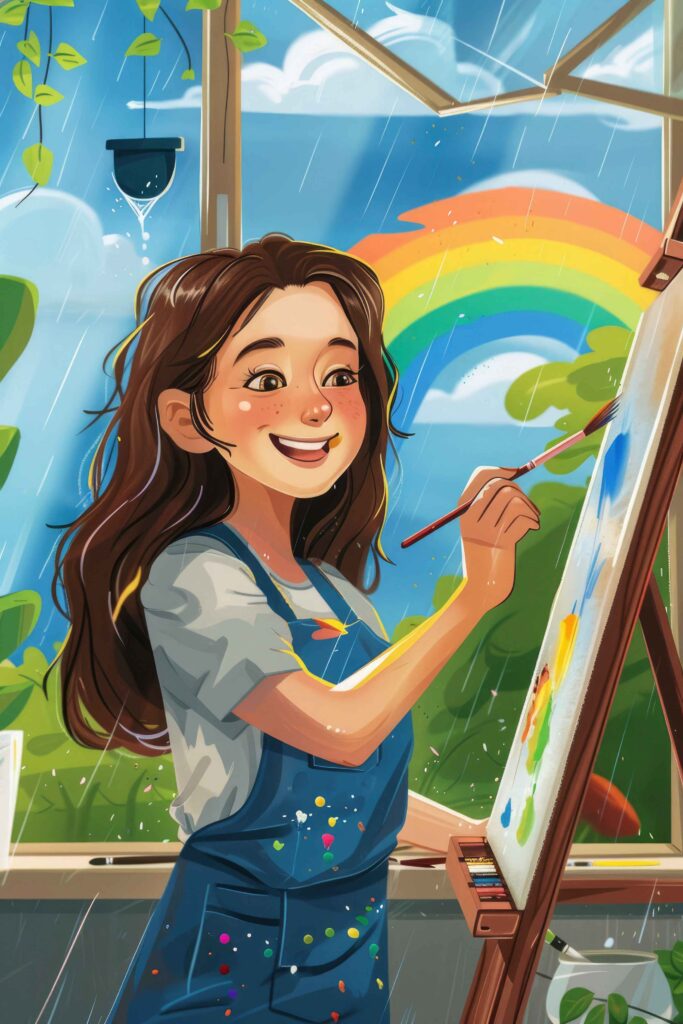
Unlike standard caricature (which often aims for humour or satire), caricatronchi emphasises expressive distortion, emotional narrative, and digital medium affordances.
An example: an oversized head, stretched limbs, abstracted background, neon colour palette—these could all be features of a caricatronchi piece.
Exploring more deeply, caricatronchi often functions as more than just a portrait. It becomes a symbolic image of identity, mood, digital persona, or cultural commentary.
In simple terms: when someone commissions a caricature for fun and you get a cute cartoon-look, caricatronchi takes that further—bold shapes, stylised limbs, vivid colours, digital textures, emotional or conceptual themes.
In that sense, we can define: caricatronchi = stylised exaggeration + fragmentation + digital art + emotional/identity layer.
Origins and Evolution of Caricatronchi
Early Caricature Roots
The art of caricature goes back centuries. The word “caricature” comes from the Italian caricare (“to load, exaggerate”) meaning a “loaded” portrait that amplifies notable traits.
Artists such as James Gillray (18th–19th c) used caricature for social satire and humour.
Over time, caricatures were drawn on paper, live at fairs, or printed in magazines.
Transition to Digital & the Rise of Caricatronchi
With digital illustration tools, stylus tablets, vector software and AI‐assisted platforms, the boundaries between caricature, cartoon, surreal illustration, and digital art began to blur. Caricatronchi emerged in this transitional space.
Sources attribute its rise to online art communities, social-media sharing, NFT culture, and a hunger for expressive identity visuals.
Specifically:
- The “tronchi” portion invokes fragmentation or body segments, a motif from modern sculpture or digital glitch art.
- The ability to draw, edit, animate or convert caricatronchi art digitally gave it global reach.
- Thus, the style is less about a single moment and more about a trend of art making that uses exaggerated form, digital tools, identity themes.
Why the Name Works
- “Carica” (from caricature) connects to the concept of exaggeration.
- “Tronchi” evokes trunk/fragment, hinting at body parts, distortion, segments.
Together “caricatronchi” functions as a memorable brand for this type of work.
By 2025 the term is widely used (in specialist art blogs) to refer to this style.
Key Characteristics of Caricatronchi
To identify or create caricatronchi art, note these features:
1. Exaggerated Features & Fragmentation
- Big heads, elongated limbs, oversized eyes, stretched torsos.
- Elements may be fragmented: body parts separated, disconnected, stylised.
- The exaggeration isn’t just funny—it often hints at identity, mood, or commentary.
2. Bold Colours & Digital Texture
- Vivid colour palettes, neon or flat graphic choices.
- Smooth digital lines, vector shapes, high contrast.
- Use of textures (glitch, collage, mixed media) in some cases.
3. Emotional or Conceptual Layer
- The subject might represent more than a person; it could represent ideas: fragmentation of identity, digital self, social commentary.
- Unlike a purely humorous caricature, here the distortion has meaning.
4. Digital Medium & Sharing Culture
- Often created in software: Procreate, Illustrator, Photoshop, or via AI tools.
- Designed for sharing: social media avatars, NFT artworks, branding.
- Formats might include static images, animations, GIFs.
5. Hybrid of Styles
- Combines caricature + cartoon + surreal or abstract form.
- Could evoke pop art, street style, digital illustration, graphic design.
Why Caricatronchi Is Growing in Popularity
Multiple factors align to boost the popularity of caricatronchi:
Personal Branding & Online Identity
In a world of profile pictures, avatars, digital footprints, people want unique representations—not photos. Caricatronchi offers standout visuals that reflect personality.
Brands and influencers use caricatronchi-style portraits to break through visual noise.
Social Media & Shareability
These images are vibrant, eye-catching and suited to Instagram, TikTok, Twitter. The exaggerated, stylised look stands out in scroll feeds.
Hashtags like #caricatronchi help build communities and shareability.
Accessibility & Digital Tools
Digital illustration tools have lowered the barrier. Artists can experiment; clients can commission remotely.
Even beginners can create basic caricatronchi-style designs.
Art-for-Expression & Cultural Relevance
Caricatronchi taps emotion, identity, culture. It doesn’t just mock—it reflects. For instance, fragmentation might reflect digital anxiety, multi-persona selfie culture, or identity shifts.
Thus, it resonates in modern visual culture.
Adaptability & Commercial Use
Caricatronchi works for gifts, event illustration, branding, NFTs, avatars, marketing visuals.
Businesses see value in a custom exaggerated portrait rather than a generic stock image.
How to Create or Commission Caricatronchi Artwork
If you’re an artist wanting to try caricatronchi, or you’re a client looking to commission one, here’s how to do it.
Steps for Artists:
- Observe & Identify Features – Look at the subject’s face or body and pick distinct traits (big nose, strong brows, smile, posture).
- Exaggerate with Purpose – Push the features you identified, but keep enough resemblance to still identify the subject.
- Fragment or Stylise Form – Consider breaking body parts, elongating, or re-arranging shapes (optional).
- Digital Medium – Use tablet + stylus, or software like Procreate, Illustrator, Photoshop. You might layer textures or mixed-media elements.
- Colour & Style – Select a bold palette, flat shapes, graphic outlines. Maybe add neon, gradients, or glitch effect depending on mood.
- Narrative & Context – Decide what you want to convey: fun, identity, irony, brand message.
- Share or Deliver – Format for social profile, print, or digital asset. If commissioned, provide formats (PNG, EPS, layered PSD, etc).
- Engage with Audience – Use social media, hashtags like #caricatronchi, join art communities.
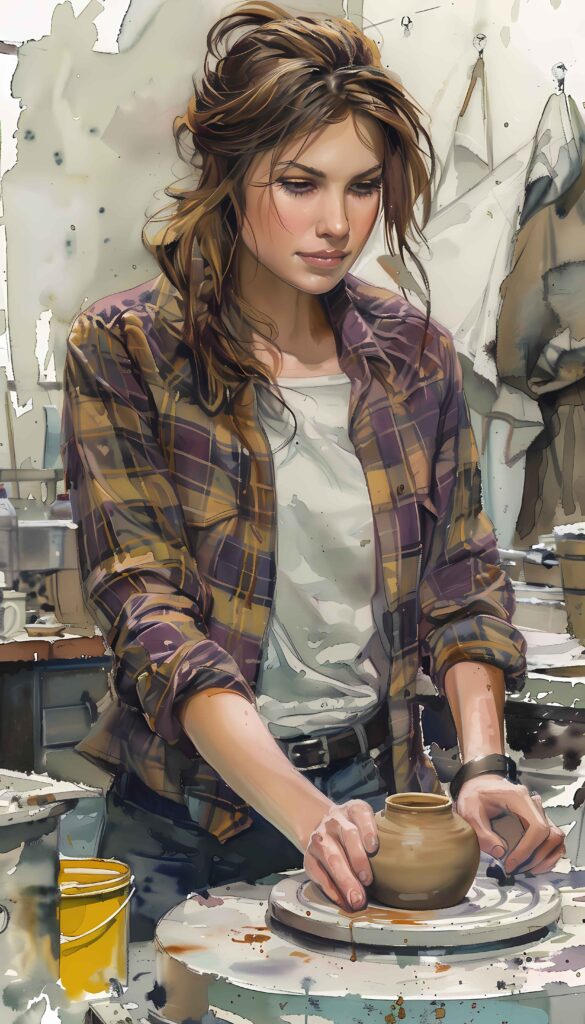
Steps for Clients:
- Define your objective: avatar? gift? brand icon?
- Gather references: clear photos, preferred style.
- Choose an artist experienced in exaggeration and digital illustration.
- Agree on deliverables: size, format, revisions, usage rights.
- Review sketch & approve before finalising.
- Use the finished caricatronchi in your online presence: profile pics, website, marketing, print.
- Credit the artist if applicable and share on social media to increase visibility.
Tips & Considerations:
- Communication matters: ensure you mention caricatronchi style, not just “cartoon me”.
- Exaggeration should still preserve likeness; if it’s too abstract you may lose recognition.
- Respect cultural sensitivities: exaggeration can become offensive if body traits tied to identity are distorted without care.
- For brand use: make sure licensing and usage rights are clear.
- For print: ensure resolution, colour mode (CMYK vs RGB) are specified.
More Read About: Christine Trevelyan Husband: Everything You Need to Know
Caricatronchi vs Traditional Caricature: A Comparison
| Feature | Traditional Caricature | Caricatronchi |
| Medium | Pen/pencil on paper, live sketch, print | Digital tools, mixed media, sometimes 3D or AI |
| Purpose | Humour, satire, likeness | Expression, identity, stylised exaggeration |
| Features | Exaggerated face or expression | Exaggeration of face + body + fragmentation |
| Colour/Style | Usually minimal colour or simple shading | Bold colours, graphic style, digital textures |
| Use case | Street artists, caricature booths, magazines | Avatars, branding, gifts, NFTs, social media |
| Emotional/Conceptual Layer | Mostly humour or satire | Emotional, symbolic, conceptually rich |
| Tools | paper, ink, markers | tablets, software, digital brushes, AI tools |
This table helps you see clearly how caricatronchi diverges from classic caricature while still sharing ancestry.
Applications of Caricatronchi
Here are ways people and businesses use caricatronchi style:
- Personal avatars: Individuals use caricatronchi portraits on social media, streaming platforms, forums.
- Branding and marketing: Companies hire artists to create a unique caricatronchi mascot or character for their campaign.
- Event gifts and souvenirs: Weddings, anniversaries, parties sometimes feature caricatronchi‐style portraits of guests.
- NFTs and digital art: Artists issue caricatronchi pieces as limited-edition digital assets, leveraging the visual uniqueness.
- Education and therapy: Some art educators use exaggerated portraits to help students explore identity or emotion through caricatronchi style.
- Merchandise: T-shirts, stickers, phone cases printed with caricatronchi designs.
- Social media content: Influencers use stylised portraits instead of photographs for distinct visual identity.
Because caricatronchi is both eye-catching and expressive, it fits contexts where uniqueness and personality matter.
“Caricatronchi fuses the boldness of caricature, the depth of anatomical fragmentation, and the surreal power of symbolism.”
“In an age where identity is filtered, stylised and endlessly shareable, a new form of digital expression is quietly gaining momentum: Caricatronchi.”
“Caricatronchi portraits are perfect for profile pictures, banners, websites and even marketing materials due to their eye-catching and unique style.”
These statements help illustrate the conceptual and practical significance of the style.
Challenges & Criticisms of Caricatronchi
While caricatronchi is vibrant and popular, it also poses challenges:
- Over-exaggeration risk: Distort too far and the subject may become unrecognizable or grotesque.
- Cultural sensitivity: Exaggerating certain features can inadvertently reinforce stereotypes or offend.
- Trend risk: As popularity increases, the style may become overused and lose novelty.
- Technical skill required: Creating high-quality caricatronchi demands digital art skills, good design sense, and sometimes animation knowledge.
- Copyright/licensing issues: When used commercially, the rights and usage must be clearly defined.
- Mis-classification: Some might call any caricature a caricatronchi; you need to ensure the style’s distinctiveness remains.
Addressing these helps ensure the artwork remains effective and respectful.
The Future of Caricatronchi
What lies ahead for caricatronchi?
- Integration with AI and generative art: More artists will use AI tools to generate or assist caricatronchi visuals.
- Virtual/augmented reality: Expect live VR/AR incarnations of caricatronchi portraits, interactive and immersive.
- Cross-media expansion: Beyond portraits into animation, short films, immersive installations.
- Broader commercial adoption: Brands may commission caricatronchi style visuals as part of identity, packaging, campaigns.
- Educational/therapeutic uses: Using exaggerated style for self-expression, identity work, therapy or classroom creativity.
- Global and cultural fusion: Artists from different cultural backgrounds will bring their own motifs into caricatronchi, enriching the style.
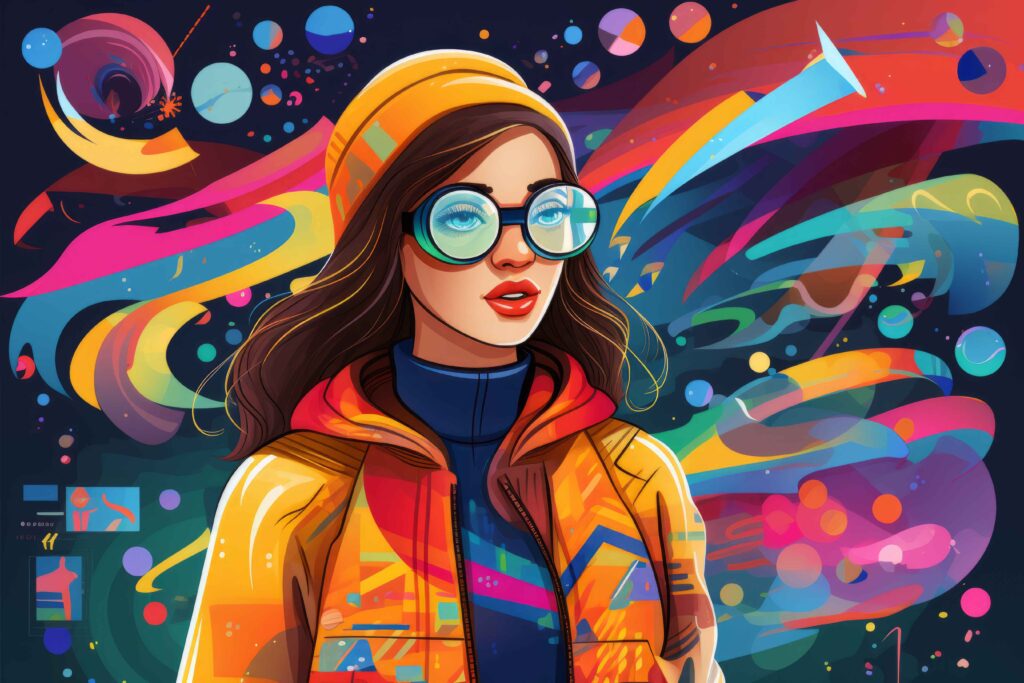
In summary: caricatronchi has momentum and potential beyond being a passing fad—it could evolve into a robust visual movement.
Comparison Table
Here is a comparison of caricatronchi against related styles to clarify its position:
| Style | Medium & Tools | Visual Features | Typical Use Cases |
| Traditional Caricature | Paper, ink, live sketch | Face distortion, humour, simple colour | Festivals, magazines, quick sketches |
| Cartoon / Illustration | Digital or traditional illustration | Stylised bodies, playful shapes | Comics, children’s art, character design |
| Caricatronchi | Digital tools, vector/AI/drawing apps | Exaggerated + fragmented bodies, bold colour | Branding, avatars, digital art, NFTs |
| Surreal Portrait | Mixed media, digital collage | Dream-like, abstract, symbolic | Fine art galleries, conceptual works |
This table helps place caricatronchi within a wider visual art ecosystem.
Conclusion
Caricatronchi is a fresh, expressive, and visually compelling art form that takes caricature into the digital age. It blends playful exaggeration, stylised distortion, emotional depth, and modern illustration tools to create portraits that stand out. For artists it offers a new realm of creative exploration. For clients it offers unique branding, personal identity visuals, and shareable content. As digital culture continues to shift, caricatronchi promises to remain relevant, adaptive, and powerful. Embrace it—whether you create it, commission it, or simply enjoy it.
FAQ About Caricatronchi
1. What is caricatronchi exactly?
Caricatronchi refers to a stylised art form that merges caricature (the exaggerated depiction of a subject) with “tronchi” (fragments/trunks) to produce portraits with bold exaggeration, fragmentation, and digital style.
It emphasises both likeness and expressive distortion.
2. How does caricatronchi differ from a regular caricature?
Regular caricature mainly exaggerates facial features for humor or satire. Caricatronchi takes that further: it may exaggerate body parts, fragment form, use vivid colour, digital textures, and include conceptual or emotional layers.
Essentially, caricatronchi = caricature + stylised distortion + digital flair.
3. Can anyone create a caricatronchi portrait?
Yes—anyone with basic digital art tools and interest can attempt it. Key steps: identify subject’s features, choose what to exaggerate, stylise the form, apply bold colour/style.
Professional quality benefits from experience and tools.
If you prefer commissioning, define your style, usage rights, and deliverables.
4. Where is caricatronchi used?
Caricatronchi finds use in:
- Personal avatars and social media profiles
- Branding and marketing visuals
- Gifts (weddings, birthdays)
- Digital art markets and NFTs
- Education and creative workshops
Because the style is memorable and shareable it thrives online.
5. What should I watch out for when using caricatronchi?
- Ensure likeness is preserved if recognition is important.
- Avoid cultural/identity sensitivity issues when exaggerating features.
- Clarify rights and formats if used commercially.
- Don’t overuse a style trend—if many use the same aesthetic it may lose distinction.
- Make sure tools and resolution are appropriate for the final medium (print vs digital).
6. Is caricatronchi a passing trend or a lasting style?
While no one can predict art trends with certainty, current indicators (digital identity demand, social media sharing, commercial interest, evolving tools) suggest caricatronchi has staying power.
Its blend of expression, identity, and digital medium make it relevant for now and potentially future.
👉 It is more than a momentary fad.
Share this content:
